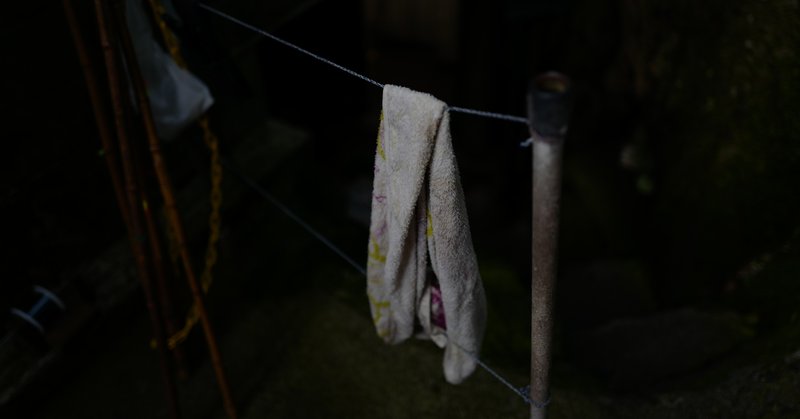
"いんえいさん"で考え中 / Talking About "IneiSan" (English Translation)
「私は、われわれが既に失いつつある陰翳の世界を、せめて"写真"の領域へでも呼び返してみたい。」
(谷崎潤一郎『陰翳礼讃』から、一部変更)
影や、暗い部分の多い写真は、いつもより時間がとまった感がつよい。それでいて、なにかほっとするような感もある。そんな「影や、暗い部分」のことについて、かつて文豪、谷崎潤一郎は随筆「陰翳礼讃」で書いていた。
"いんえいさん"で考え中
「陰翳礼讃」の読みは、インエイライサン。影や、光のあたらないところをほめたたえる、という意味だ。「陰翳礼讃」は漢字だといまいち堅苦しいのだけれど、英語だとかんたんに、「In Praise of Shadows(影を褒める)」。
谷崎はその随筆で、「いかに日本人が陰翳の秘密を理解し、光りと蔭との使い分けに巧妙であるかに感嘆(原文より)」としていた。そして同時に、西洋文化をベースにした近代化によって、その「陰翳の秘密」が失われつつあることを嘆いていた。
「陰翳礼讃」が書かれてから80年以上経過した。にもかかわらず、その作品とともに「陰翳礼讃」の代表例として紹介されるのは、いまだに伝統的な日本家屋だったり、能だったり、茶だったりと、当時のままのイメージを踏襲しているものが多い。
けれど、実際にはそれら以外の場所にも、「陰翳礼讃」は脈々と受け継がれているような気がする。
また、谷崎潤一郎の伝えたかったこと(というか恨み節?)は、ただたんに「影を褒める」だけにとどまるものでは無いと、作品を読んで思った。
これは、ひとりよがりな美意識と、自律と、それらを守りぬくための技術についての物語だ。
この「いんえいさん」プロジェクトでは、「陰翳礼讃」の意味と、それが適用されうる場所の拡張を試みる。主に3つの意味が込められている:
1. 「陰翳礼讃」の拡張
2. 80年後の「陰翳礼讃」
3. 「陰翳礼讃」への、自分なりのものさし
その試行は、世間に落ち着きを取り戻すため。あふれる情報の中、暗さを起点とした落ち着くイメージを投下する作業。それを、「いんえいさん」プロジェクトと呼ぼう。たとえばこのような。
こちらで日々更新しているので、是非フォローを。
この計画には、だれでもいつでも参加することができる。参加方法はただひとつ。「陰翳礼讃っぽくないこれ?」と思った画像に、「#いんえいさん」とタグをつけて、好きなSNSで投稿するだけ。適当な日に、「#いんえいさん特集」をこのnoteで催します。この世間に、落ち着きを取り戻そう。
Talking About "IneiSan": "After" In Praise of Shadows (English Translation)
"I would evoke the already lost world of shadows -- at least in 'photograph's' domain."
(Inspired and mainly referred from "In Praise of Shadows: The classic essay on Japanese aesthetics" translated by Gregory Starr. *Except for 'photograph's' )
Photographs with a lot of shadows and dark areas give me a stronger sense that time has stopped than usual. At the same time, there is a sense of relief. The great writer Junichiro Tanizaki once wrote about such "shadows and dark areas" in his essay "陰翳礼讃."
These little complicated four kanji characters "陰翳礼讃" are read in kana as "In Ei Rai San," meaning, praising ("Rai San") shadows and darkness ("In Ei"). This essay is translated in English and published with the title of "In Praise of Shadows."
In the essay, Tanizaki wrote "I am impressed how Japanese people understand the secret of shadow and darkness well and how smart they are to use light and shadow properly." And at the same time, he lamented that modernization based on Western culture is losing the secret.
More than 80 years have passed since "陰翳礼讃" was written. Nevertheless, even at the present day, things introduced as representative examples of "In Praise of Shadows" are still images such as traditional Japanese houses, Noh, Japanese tea, etc.
However, in fact, you can see that the concept of "陰翳礼讃" has been handed down to not only those images but also many. In addition, reading through the essay made me think that Junichiro Tanizaki wanted to say was not limited to just praising the shadow.
This is a story about self-centered aesthetics, autonomy, and a skill to keep protecting them.
In this “After In Praise of Shadows” series, I will try to expand the meaning of it and places where this concept can be applied. "After" includes three meanings:
1. To expand "In Praise of Shadows"
2. "In Praise of Shadows" 80 years later
3. Contains my self-measure to "In Praise of Shadows"
This experiment is for shifting timelines that bring the society some tranquility. This project is for coping with information overflow by editing images based on shadows and darkness. Such images are updated regularly at here, so, do follow.
Anybody can participate to this project whenever you want. There is only one condition to participate. If you encounter one thing you think it should be in "In Praise of Shadows" world, take a picture, and just posting it to your social media feed (Twitter, Instagram, whatever) with a hashtag, #IneiSan .
Let's bring back tranquility to our timelines.
サポートするとサポートした額に応じて運気が上昇します。https://twitter.com/shouchu_record
